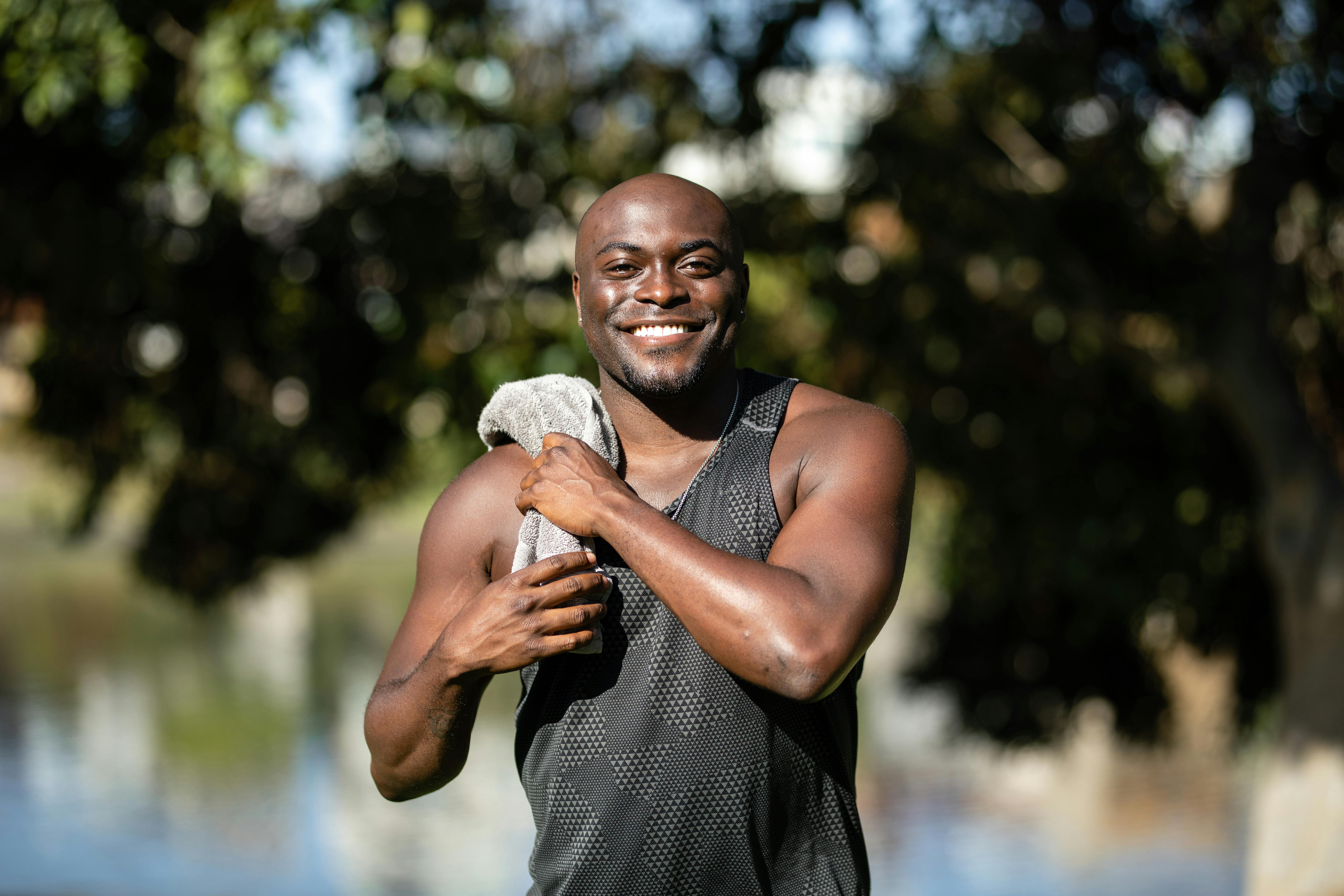Effective Methods to Strengthen Your Rear Shoulder Muscles for Improved Posture in 2025
Maintaining a strong rear shoulder is essential for proper posture, balance, and overall health. As more people become aware of how their shoulder health affects not only their physical appearance but also their daily activities, the importance of targeted training has never been greater. Strengthening the rear shoulder muscles or ‘hintere schulter übung’ plays a key role in stabilizing the shoulder blades, preventing back pain, and supporting various physical activities.
This article will explore effective ways to enhance your rear shoulder training, focusing on practical exercises, tips for improvement, and how to integrate these practices into your routine. You’ll discover how to integrate shoulder workouts, use resistance bands effectively, and identify common mistakes to avoid. By following these methods, you can enjoy healthier shoulders and a more robust posture.
Key Takeaways: Strong rear shoulder muscles, prevention of injuries, better posture, effective exercises, and overall physical wellness.
Fundamentals of Rear Shoulder Muscle Training
Understanding the Muscles Involved
The rear shoulder, specifically the posterior deltoids, plays a vital role in shoulder stability and movement. When training, you stimulate muscle groups such as the rotator cuff and the trapezius, which together contribute to a well-balanced shoulder. Strengthening these areas not only enhances performance in sports and daily activities but also aids in correcting postural imbalances.
A focus on ‘funktionelles schultertraining’ or functional shoulder training can help develop practical strength for real-life applications. This means employing exercises that mimic daily movements, promoting muscle synergy, and preventing muscle imbalances.
Recognizing the Benefits of Strengthening
Enhancing your rear shoulder muscles offers numerous benefits, such as improved posture, reduced risk of shoulder injuries, and alleviation of back pain. By improving muscle balance in the shoulders, ultimately reducing tension in the upper back and neck, you establish a solid foundation for an active lifestyle. Additionally, this can lead to better performance in various fitness activities, including weightlifting and sports.
Common Mistakes in Shoulder Training
Many individuals overlook the importance of rear shoulder training, focusing predominantly on biceps and chest workouts. Failing to engage rear shoulder muscles can lead to muscle imbalances, which can, in turn, cause injury. One common mistake is improperly executing shoulder exercises, such as the ‘hintere schulter übung,’ leading to ineffective training or injury. Ensuring proper form and integrating shoulder stretches into your routine is essential to avoid these pitfalls.
Incorporating Mobility Exercises
A significant aspect of shoulder training is enhancing shoulder mobility. Including ‘schulterdehnung’ or shoulder stretches in your regimen can help maintain flexibility and optimal range of motion. Perform dynamic stretches before your workouts, and static stretches post-exercise for the best results. Engaging in shoulder mobility training effectively prepares the muscles and joints for intense activities, decreasing the likelihood of strains.
Implementing Resistance Bands for Training
Resistance bands are fantastic tools for ‘schultermuskulatur stärken’ or strengthening shoulder muscles. They provide constant tension that benefits muscle growth while minimizing joint stress. Exercises like ‘theraband schulterübung’ can engage your rear deltoids effectively. Integrating bands into your routine enhances resistance without requiring heavy weights, making them an ideal option for those looking to enhance shoulder strength at home or in the gym.
Effective Exercises for Rear Shoulder Strength
Single-Arm Shoulder Press
The ‘einarmige schulterpresse’ or single-arm shoulder press assists in isolating the rear shoulder and ensuring both sides are equally trained. Start with a light dumbbell and maintain a straight posture. Alternate between arms to build strength and stability throughout your shoulders. This exercise strengthens not only the deltoids but also the core, promoting overall muscle balance.
Dumbbell Shoulder Rows
Implementing ‘schulterziehen mit kurzhanteln’ or dumbbell shoulder rows can aid in rear deltoid activation. Lean forward slightly, pulling both dumbbells towards your torso while squeezing your shoulder blades together. This movement can improve muscular coordination, making it a powerful addition to your shoulder workouts. Remember to focus on slow, controlled movements to engage the target muscles effectively.
Shoulder Rotation Exercises
Engaging in ‘schulterrotationsübung’ or shoulder rotation exercises enhances the stability of the rotator cuff. Use a resistance band or cable machine to perform internal and external rotations. This practice builds strength in the surrounding shoulder muscles and improves overall joint function, greatly assisting in ‘schultergelenk stabilisierung’ or shoulder joint stabilization.
Link to learn more about effective shoulder rotation exercises: Shoulder Rotation Exercises.
Wall Angels
Wall angels are a simple yet effective exercise for improving shoulder mobility and stability. Stand with your back against the wall, ensuring your head, shoulders, and hips touch the surface. Move your arms up and down while trying to keep contact with the wall. This exercise is particularly useful for ‘schultermobilität verbessern’, promoting fluid shoulder movement while strengthening rear deltoids.
Seated Band Pull-Aparts
Utilizing resistance bands for seated band pull-aparts helps in developing upper back strength and shoulder mobility. Holding the band with both hands at shoulder height, extend your arms while pulling the band apart, focusing on the shoulder blades’ activation as you do so. This exercise is excellent for both ‘hintere schulter training’ and overall upper body strength development.

Creating a Balanced Workout Routine
Integrating Frequency and Variety
When establishing a workout routine focused on strengthening your rear shoulder, ensure that you incorporate a range of exercises targeting different aspects of the muscles. Aim for balanced workouts that include both strength training and mobility work. Training the rear shoulder 2-3 times a week while allowing recovery time is essential for optimal strength gains and injury prevention.
Combining Shoulder Workouts with Other Exercises
Enhancing your routine by combining shoulder workouts with other fitness components can lead to superior outcomes. Integrate ‘rückentraining’ or back training, which complements shoulder exercises by promoting overall upper body strength. Incorporating core stability moves increases your workout efficiency and provides better support for the shoulder muscles during movements.
Scheduling Recovery Days
Scheduling rest days is crucial for any effective training regimen. Recovery allows the muscles to repair and grow stronger. Ensure your workout routine includes at least one full recovery day each week, allowing your rear shoulder muscles and other muscle groups to recuperate effectively. This will drastically improve your overall physical fitness and health.
Monitoring Progress
Tracking your progress is essential to know how your efforts translate into results. Documenting your workouts, the weights used, the reps completed, and how you feel can provide invaluable insights into your development. Adjust your training program as necessary to ensure continuous improvement.

Addressing Common Shoulder Issues
Understanding Shoulder Pain Causes
Many people experience ‘schulter schmerzen behandeln’ or shoulder pain caused by poor posture, muscular imbalances, or previous injuries. It’s crucial to understand the root of the pain before engaging in any training program. Consulting a healthcare professional or a physiotherapist can help identify specific issues and provide tailored rehabilitation exercises.
Effective Injury Prevention Techniques
Practicing shoulder injury prevention involves proper warm-up techniques, appropriate exercise selection, and maintaining good form during workouts. Engaging in ‘ergonomisches training’ or ergonomic training practices can significantly reduce the risk of shoulder injuries. Regularly integrating shoulder stretching and mobility exercises improves overall flexibility and reduces the occurrence of joint discomfort.
Using Physiotherapy for Shoulder Recovery
Completing a series of physiotherapy exercises for the shoulder enhances recovery and helps to prevent future injuries. These exercises aim to improve strength, increase mobility, and restore function in the shoulder joint. A focused rehabilitation plan ensures that individuals can return to their preferred workouts without compromising their shoulder health.
Recognizing Warning Signs
It’s important to recognize when pain becomes an underlying issue. If discomfort persists or worsens with exercise, consider consulting a health professional. Identifying and addressing problems early can prevent more severe complications down the line. Employing mindfulness movements and relaxation exercises can also help reduce muscle tension and discomfort.
Conclusion: Prioritizing Shoulder Strength for Overall Health
Strengthening your rear shoulder muscles is crucial for better posture, overall fitness, and injury prevention. Incorporating effective exercises, while understanding the role behind muscle balance and proper recovery, can set the foundation for a healthier lifestyle. By remaining proactive and aware of your shoulder health, you can cultivate a strong and resilient upper body.
Discover more about optimizing your shoulder workouts: Shoulder Workout Guide.
Remember to train safely, listen to your body, and always prioritize effective warm-ups and stretching to maintain optimal shoulder health. Through dedicated effort and consistency, achieving healthy and functional shoulders in 2025 is entirely possible.
